Ikat is a technique, with which, you dye the yarn according to the planned pattern before weaving. It is a technique traditionally used in Southeast Asia, India, east Asia and Africa. Some dye both the weft and the warp in pattern and match them as they weave, some dye only weft or warp in patterns.
I got into the IKAT idea when watching videos about Kurume Kasuri (Ikat from the region of Kurume in Japan). They plan the pattern in geometrical way, rather than visual motifs like specific image of a flower. Then they tie the group of threads by hand or by a machine, then dye with indigo, like this one.
I wanted to try out if I can make IKAT, and develop it to an algorithmic pattern technique. For the start, I made a simple square (1cm * 1cm) pattern placed on every 5cm.
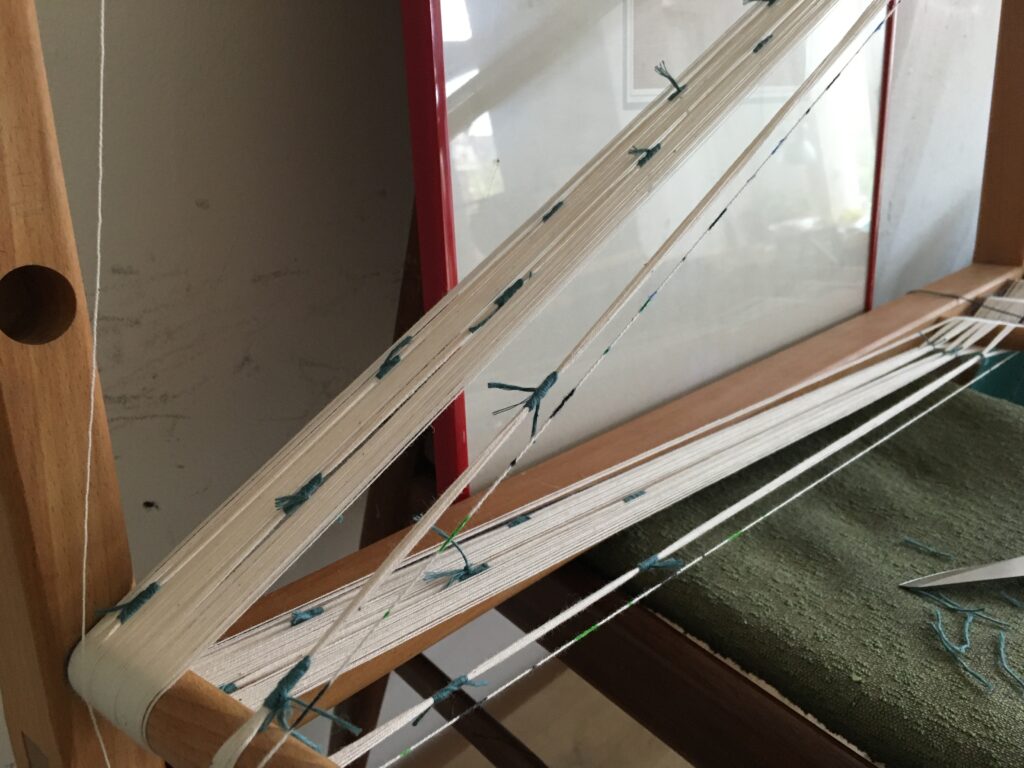
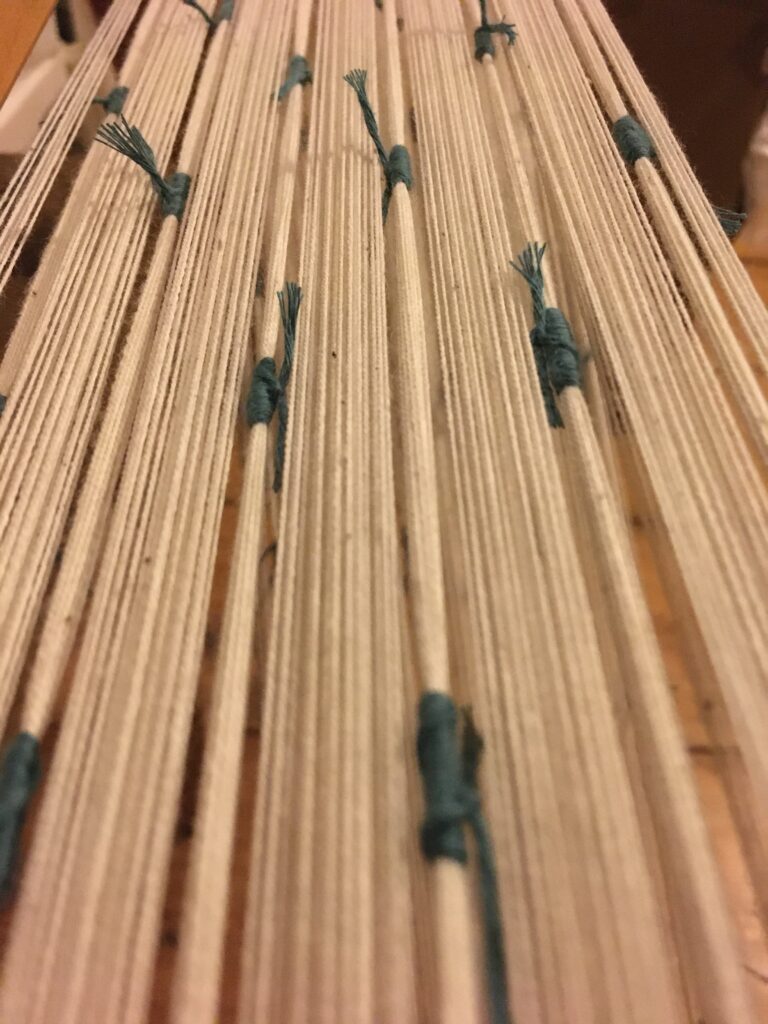
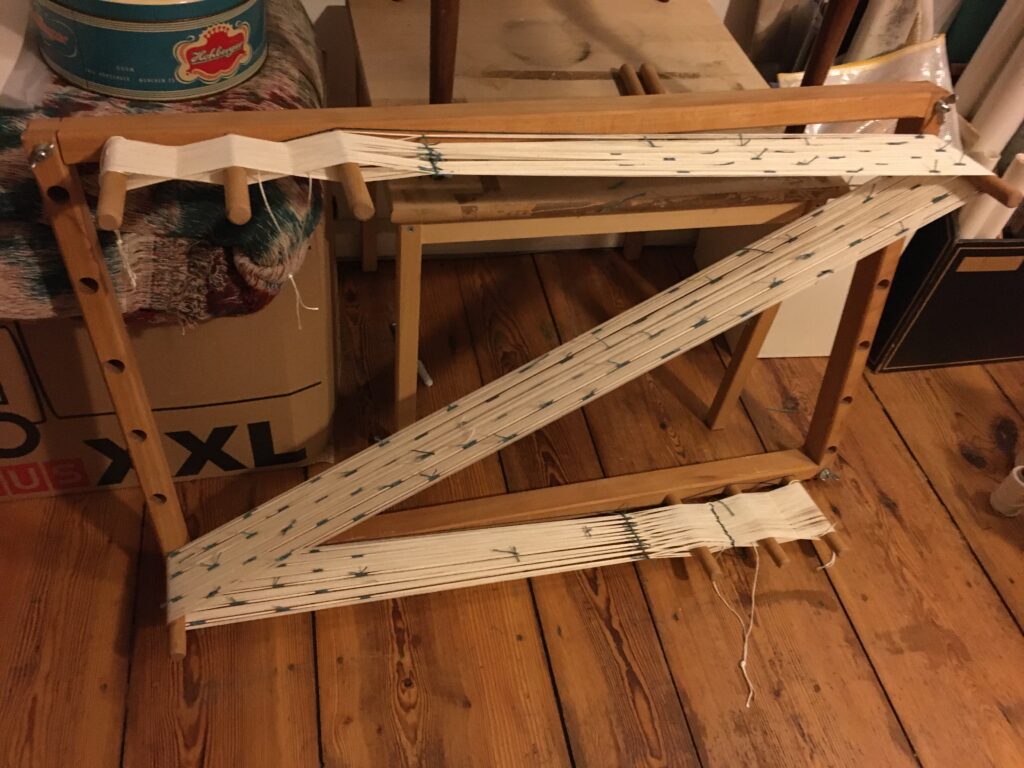
Even it is a “simple” pattern, it is not so simple as it sounds. I first planned a cotton warp, 14pic/cm for 18cm width 3m long, then wrapped the yarn on a warping frame. Then I made a marker yarn that marks where it needs to be tied/white. I tied 14 threads together on the marked position with thick blue cotton yarn. I made a line with the ties at the beginning and end of the warp. This is in case one needs¥ to align the warp on the loom later.
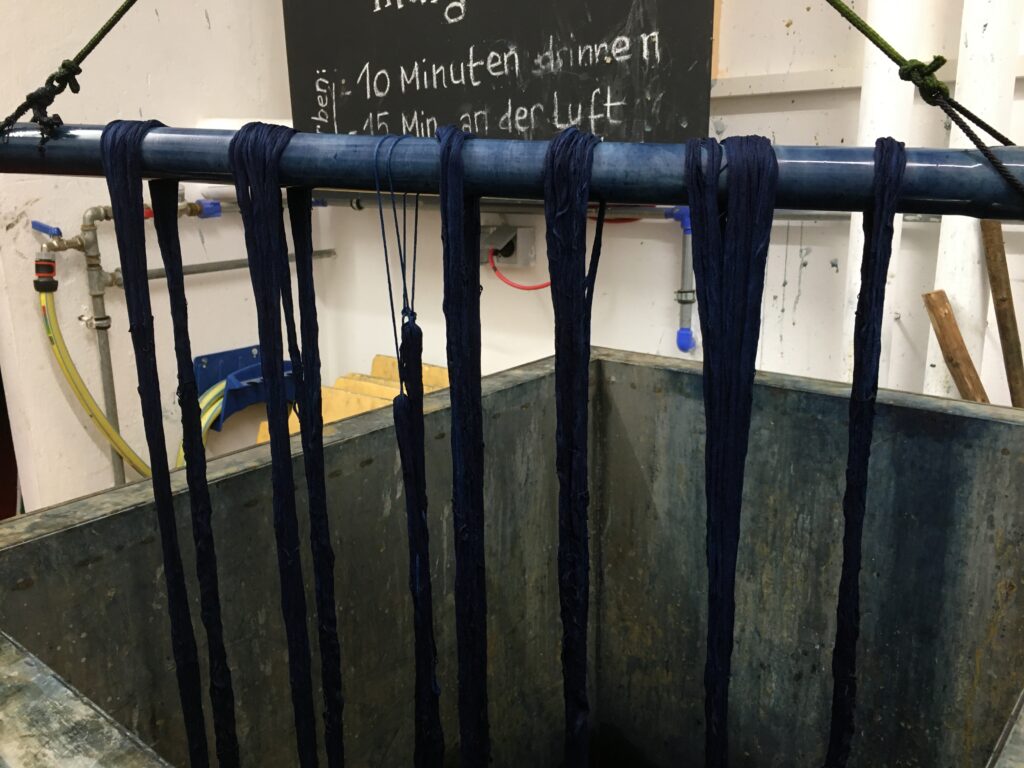
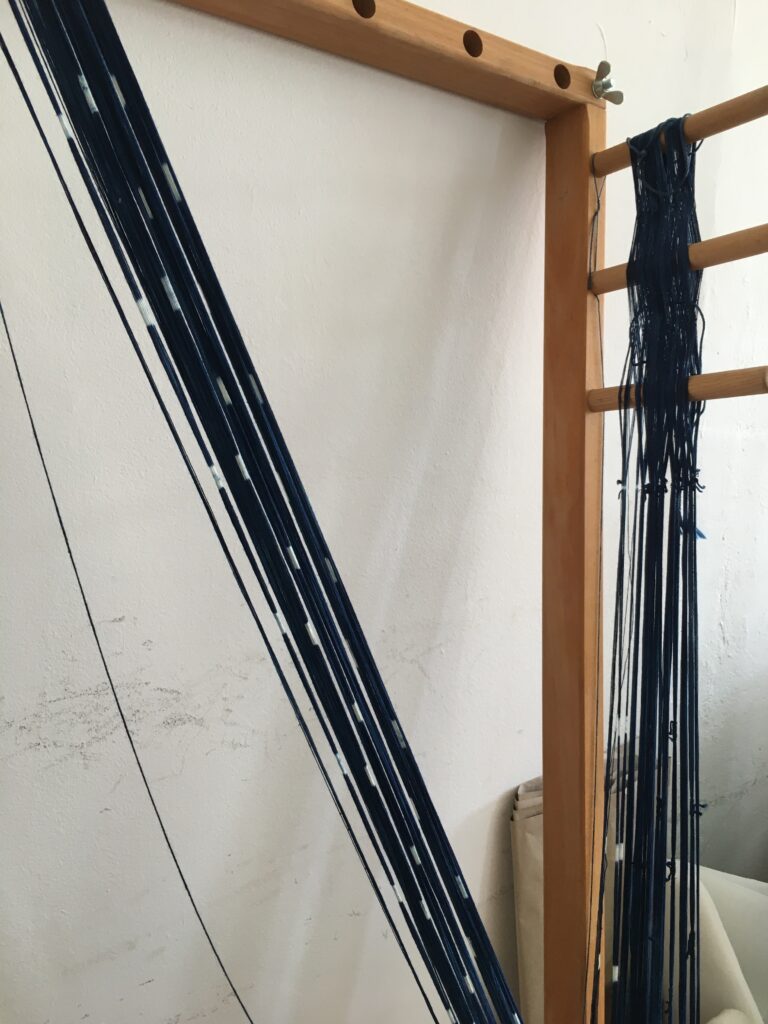
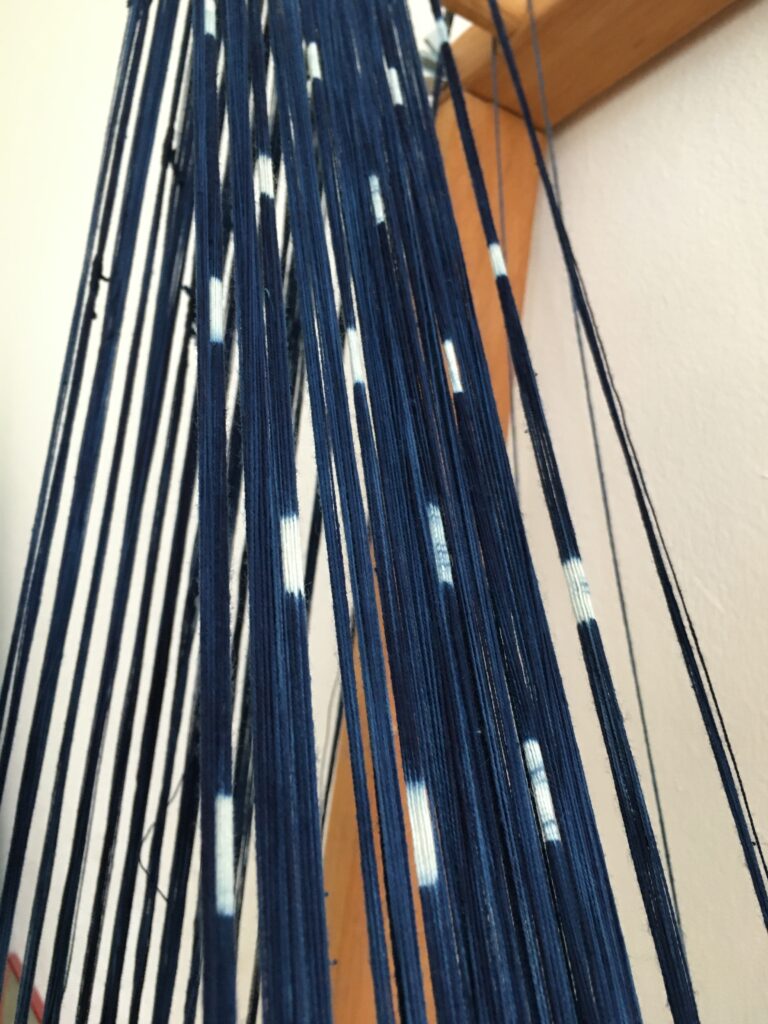
The prepared tied yarn was brought to Zeugfarberei and dyed in dark blue. After it was washed and dried, I stretched it onto the warping frame. Ideally, it will be good to stretch it back onto the original length on the warp frame before drying to keep the shrinkage the same across the warp. I did not have the same warp frame at the zeugfarberei so this was not done for this test.
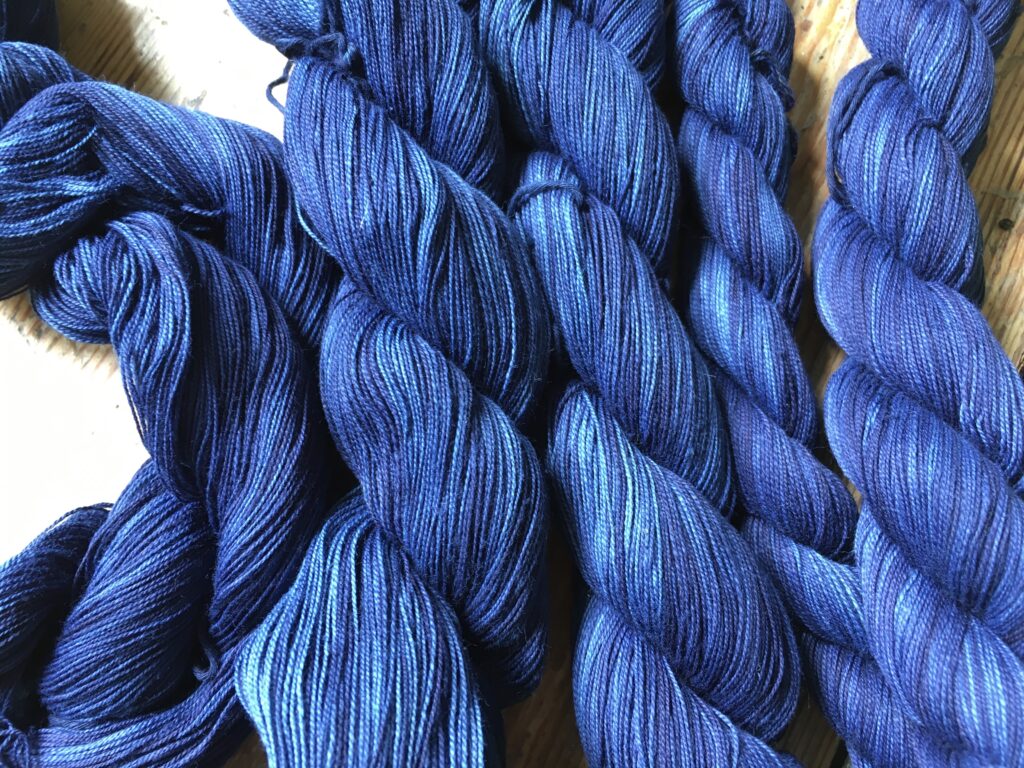
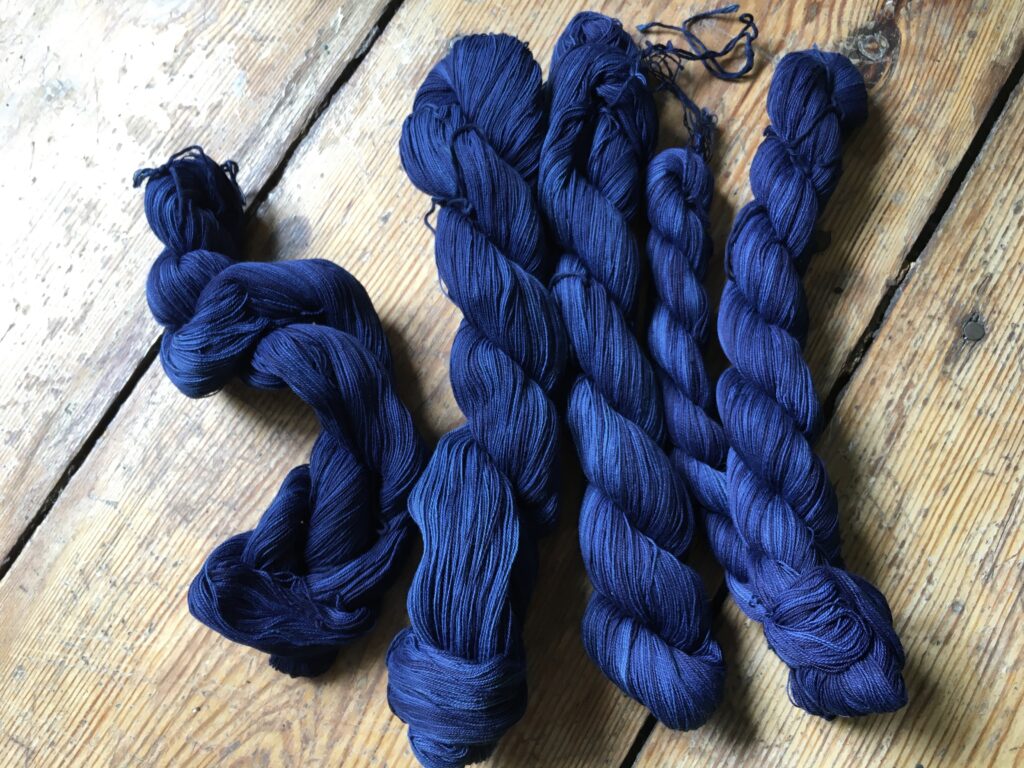
The test is planned as IKAT pattarn on the warp. I dyed more cotton yarn in the same batch to be used as weft yarn.
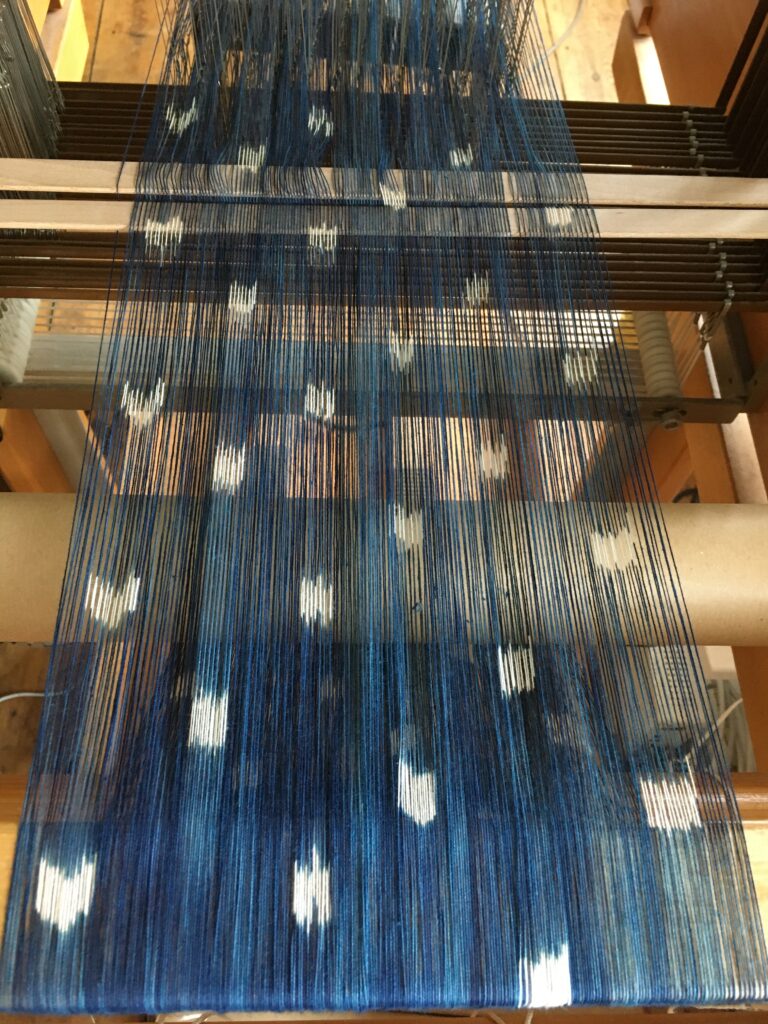
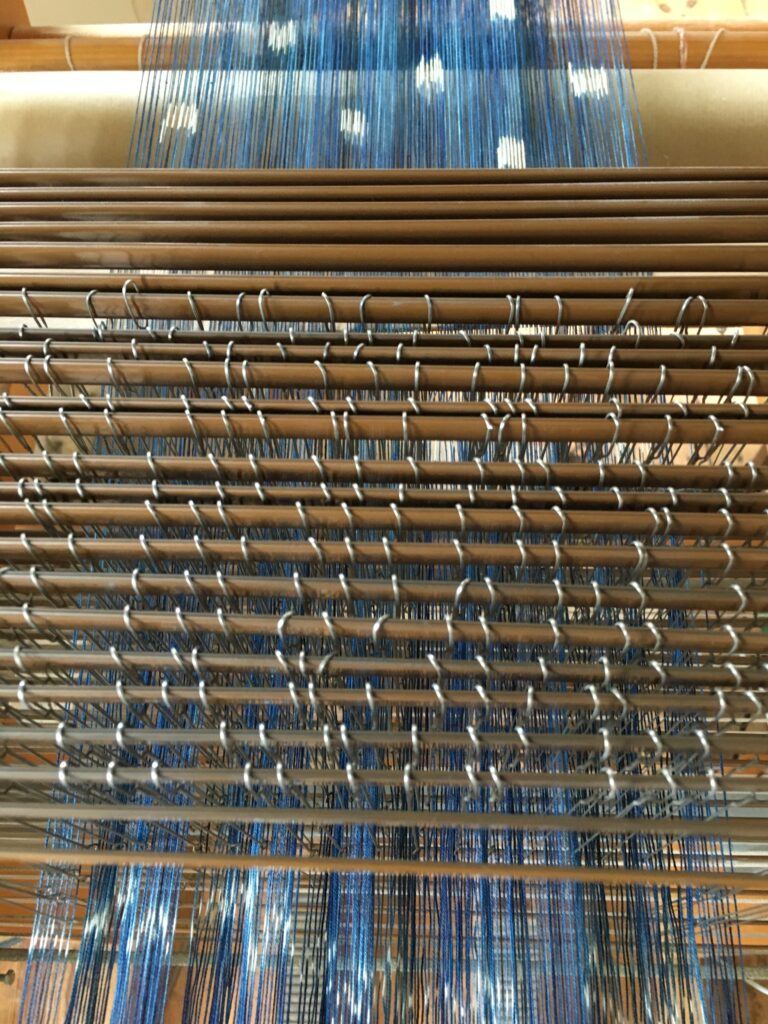
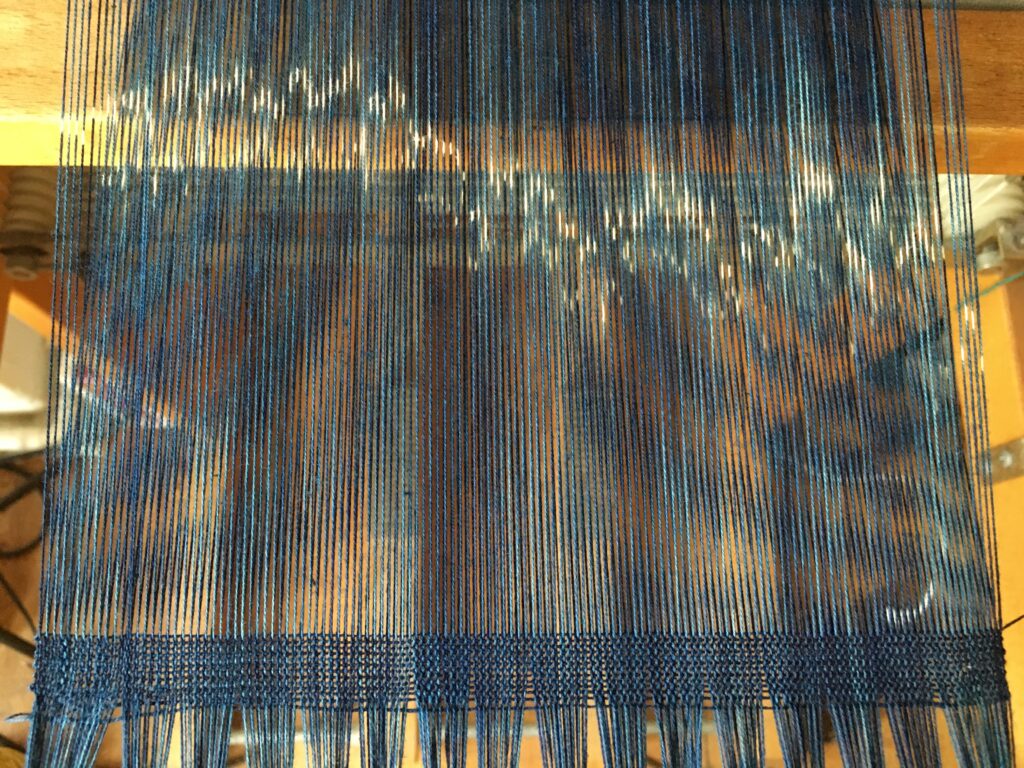
The yarn was then set up on the loom. the left most photo is from the marker in the front part of the loom. You can see how they get not aligned… I was originally planning to align them using this line, but at the end I was not sure how I could do this…
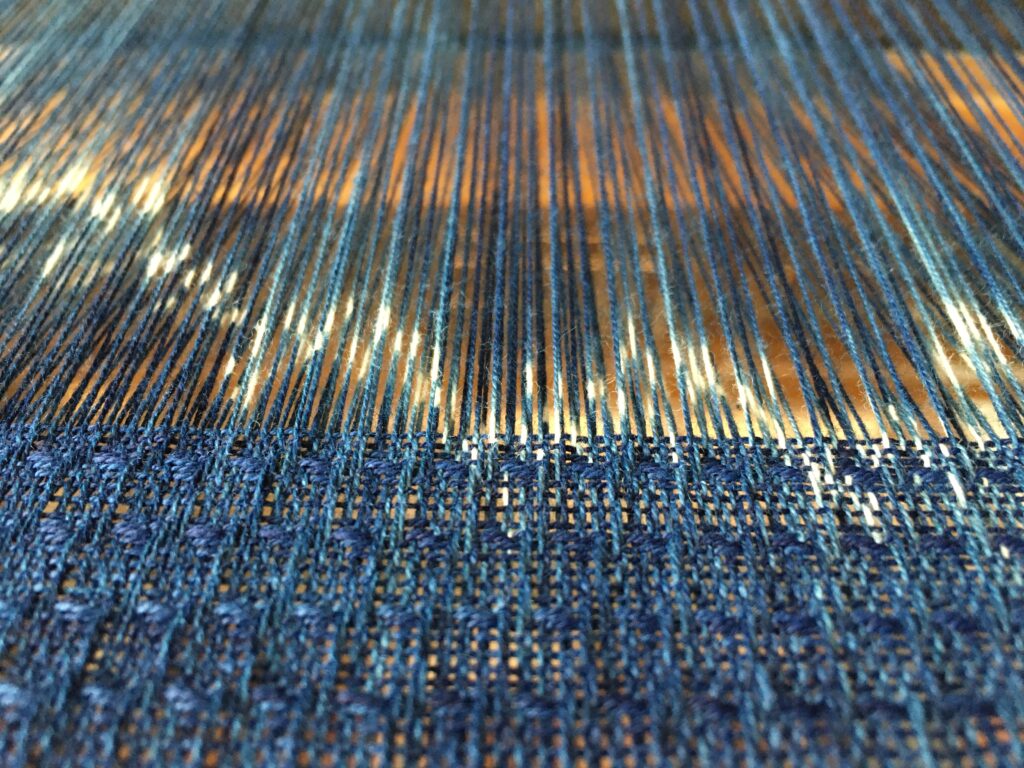
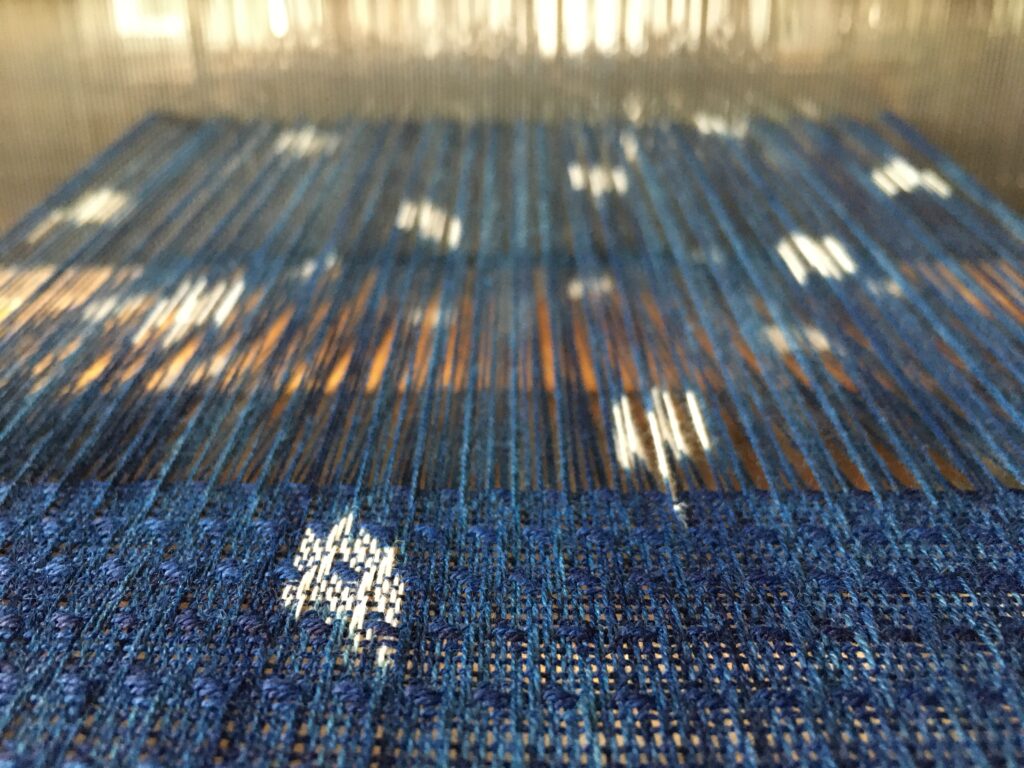
As I have 24 shafts loom, and I set it up as 16 shafts + 2 salvage shafts. IKAT is mostly woven as plain weave, but I experimented with few different weaving structures.
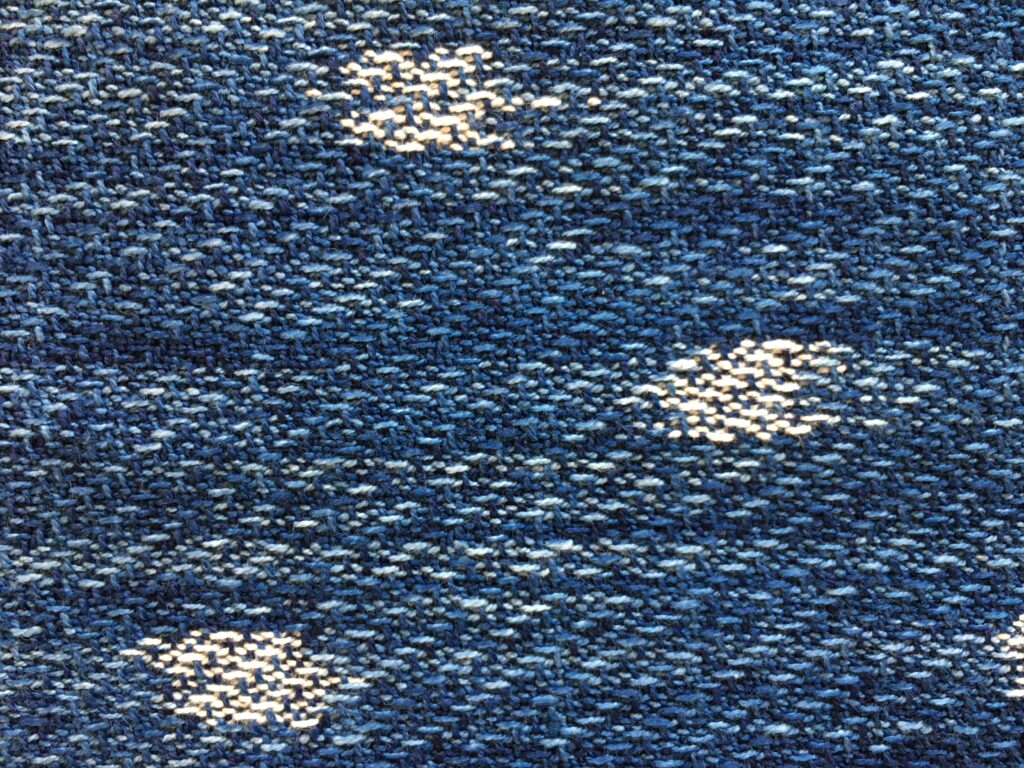
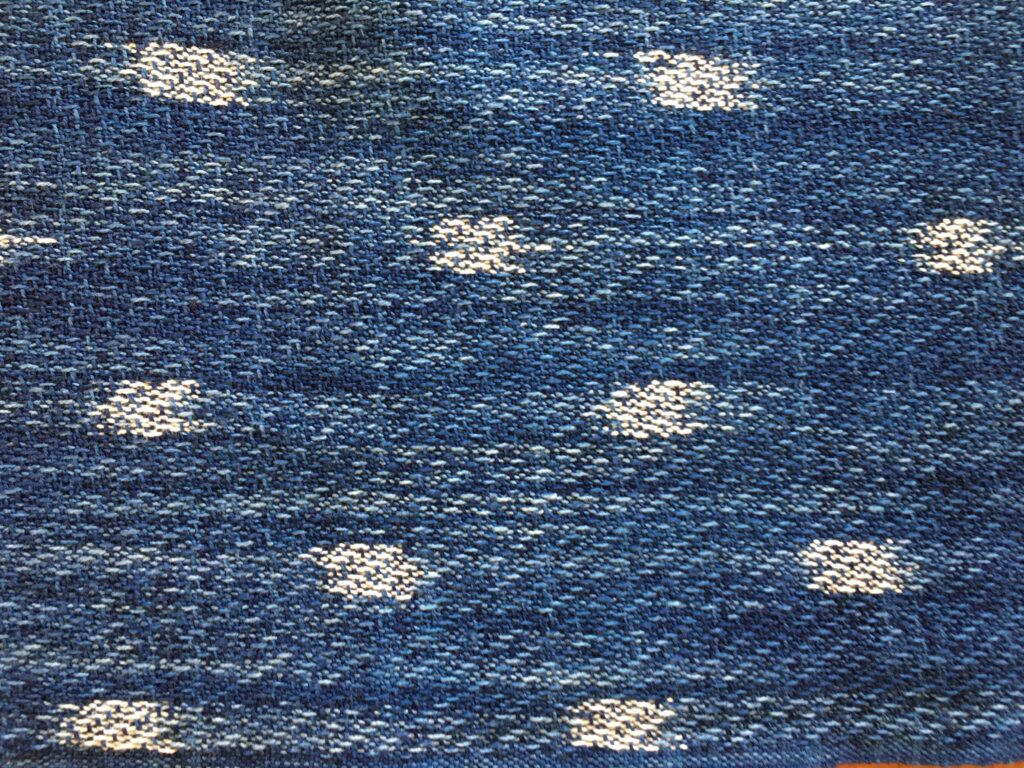
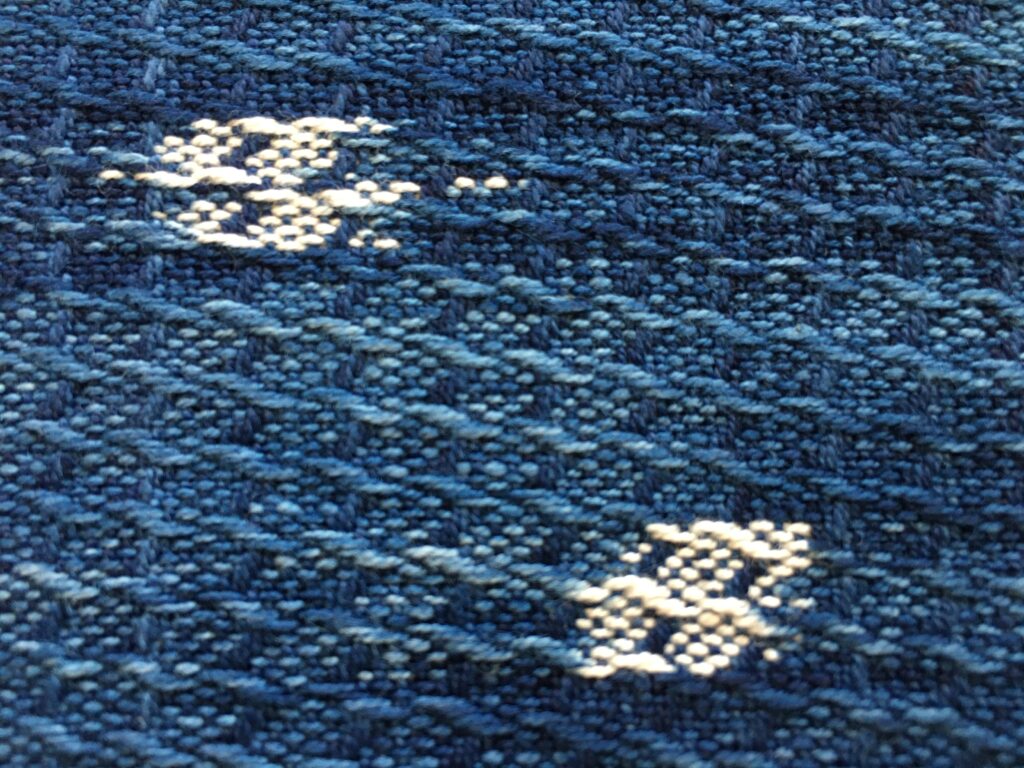
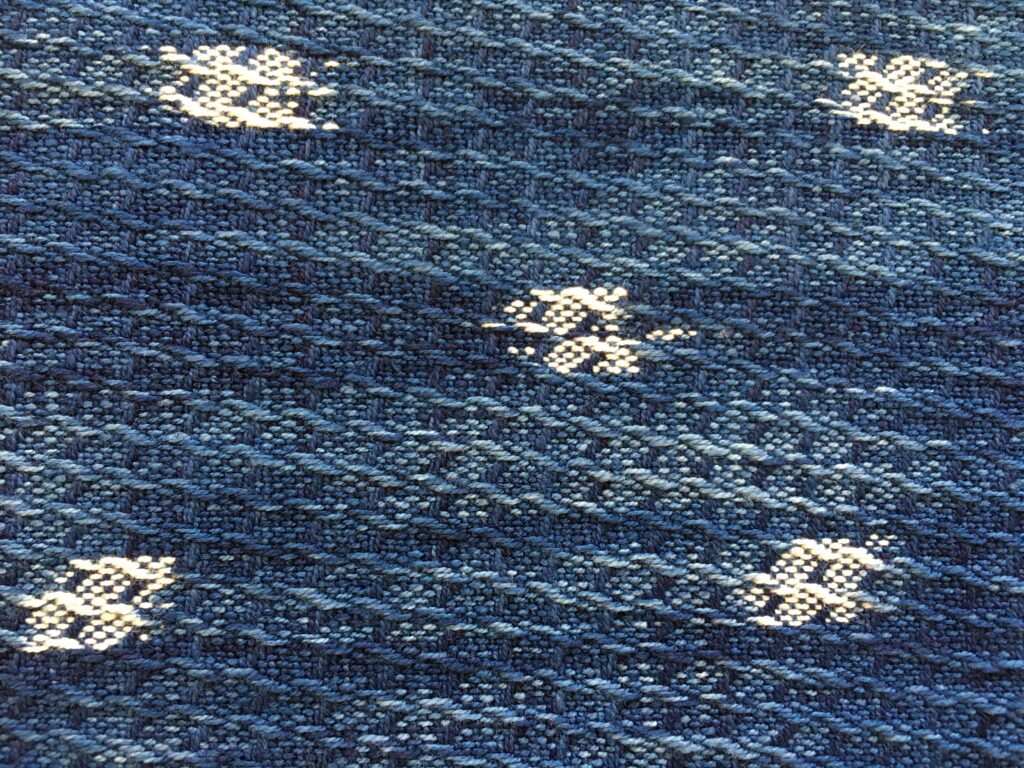
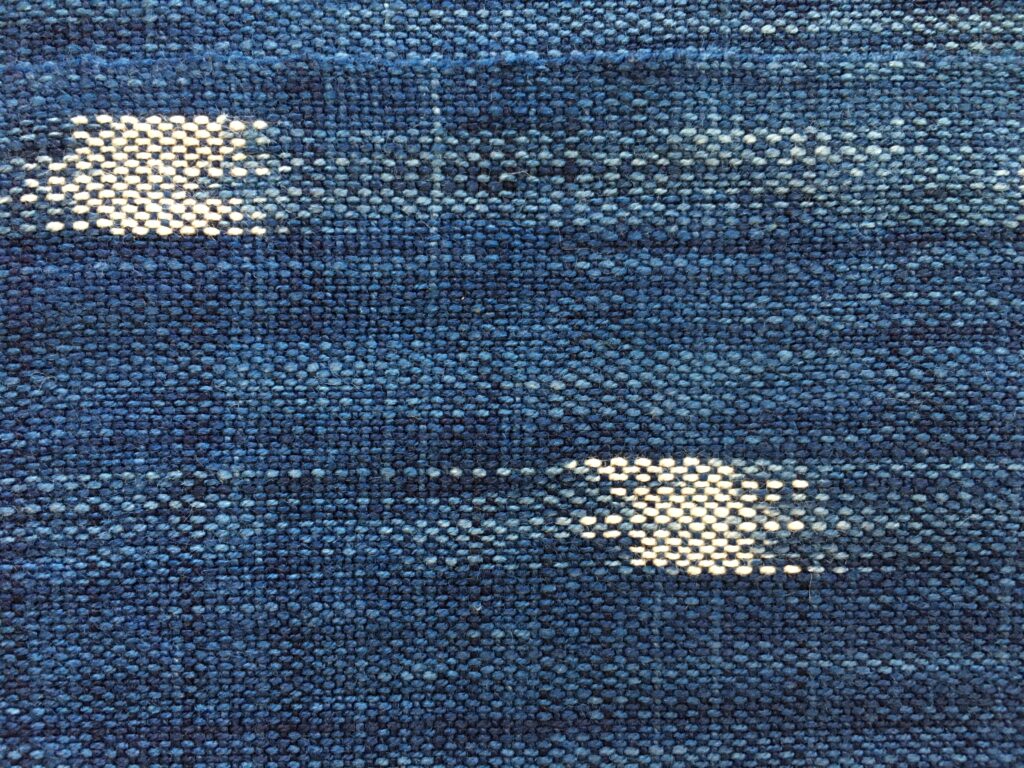
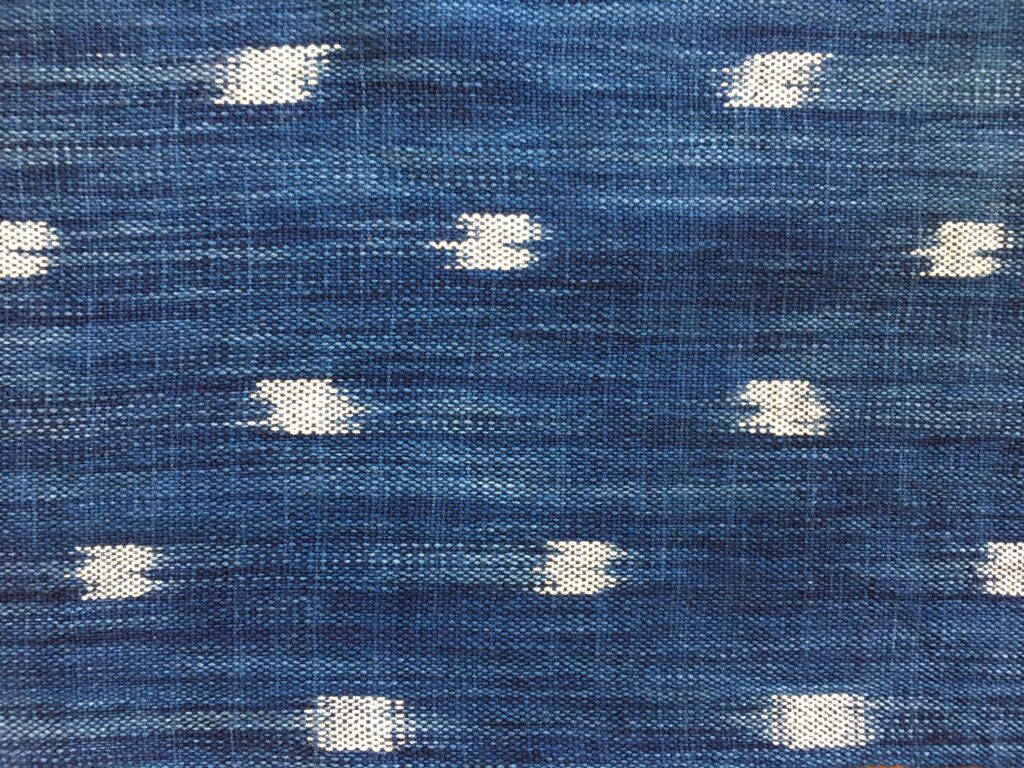
The weave structure not only give an extra visual pattern, but it also add texture to the fabric, which is really nice. Although, the classic plain weave give more focus to the ikat dye pattern, I am quite happy with the weave structure combination.
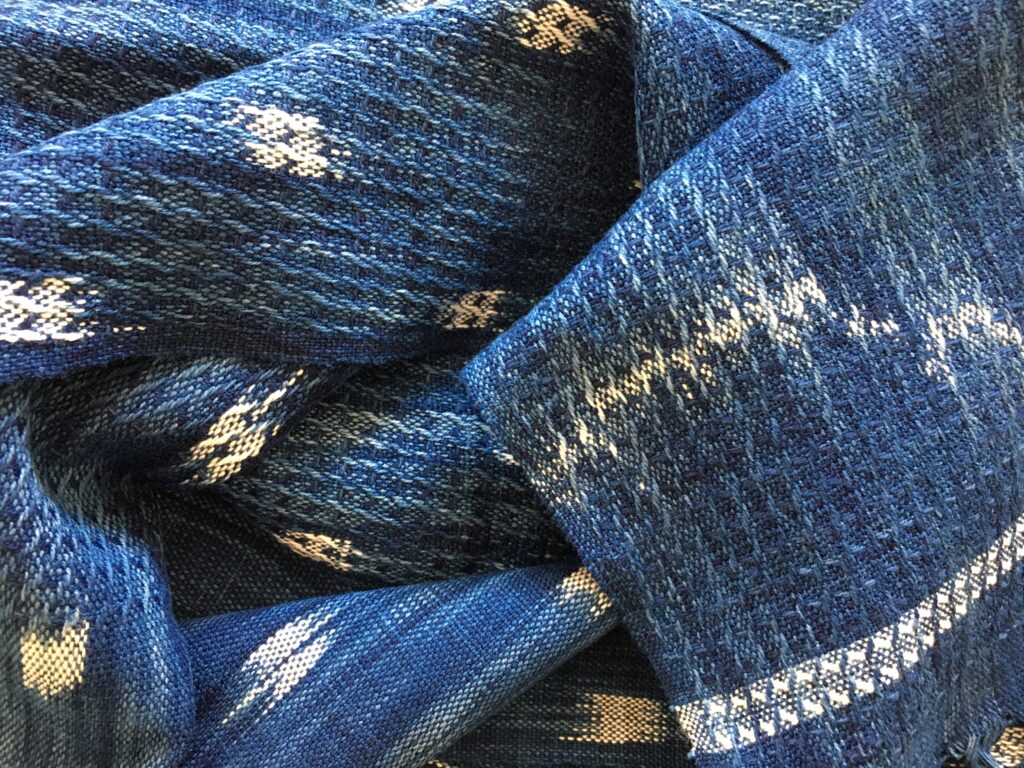
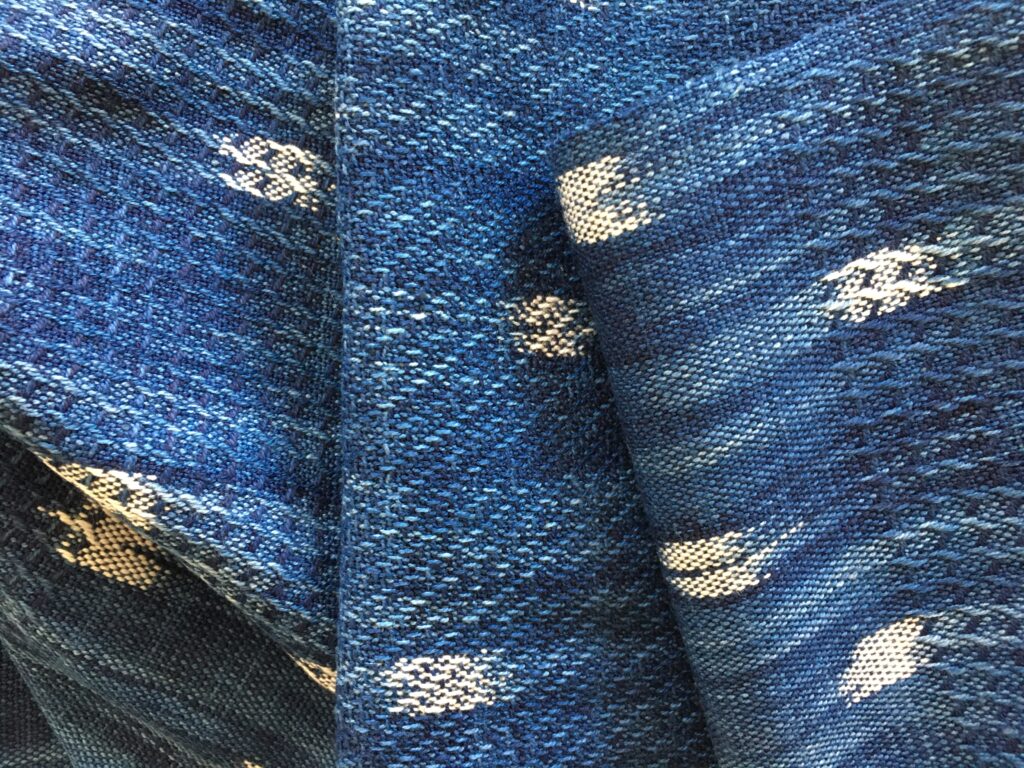
IKAT is definitely a time consuming technique, but I feel I am getting hooked with it. I will experiment more with this soon.